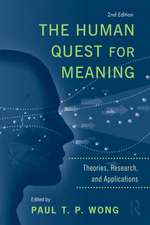Respiration and Emotion
Editat de Y. Haruki, I. Homma, A. Umezawa, Y. Masaokaen Limba Engleză Paperback – 22 oct 2012
| Toate formatele și edițiile | Preț | Express |
|---|---|---|
| Paperback (1) | 635.01 lei 6-8 săpt. | |
| Springer – 22 oct 2012 | 635.01 lei 6-8 săpt. | |
| Hardback (1) | 1108.51 lei 6-8 săpt. | |
| Springer – 31 mai 2001 | 1108.51 lei 6-8 săpt. |
Preț: 635.01 lei
Preț vechi: 747.06 lei
-15% Nou
Puncte Express: 953
Preț estimativ în valută:
121.53€ • 126.40$ • 100.33£
121.53€ • 126.40$ • 100.33£
Carte tipărită la comandă
Livrare economică 14-28 aprilie
Preluare comenzi: 021 569.72.76
Specificații
ISBN-13: 9784431679882
ISBN-10: 443167988X
Pagini: 184
Ilustrații: VIII, 175 p.
Dimensiuni: 155 x 235 x 10 mm
Greutate: 0.27 kg
Ediția:Softcover reprint of the original 1st ed. 2001
Editura: Springer
Colecția Springer
Locul publicării:Tokyo, Japan
ISBN-10: 443167988X
Pagini: 184
Ilustrații: VIII, 175 p.
Dimensiuni: 155 x 235 x 10 mm
Greutate: 0.27 kg
Ediția:Softcover reprint of the original 1st ed. 2001
Editura: Springer
Colecția Springer
Locul publicării:Tokyo, Japan
Public țintă
ResearchDescriere
Gasps, sighs, and yawns are recognized by even a casual observer as involuntary expressions of emotion through the "medium" of respiration. In recent years, scientific observation has focused on sensation and behavior as researchers investigate the relation of emotion and stress in disorders such as asthma, hyperventilation, and panic disorder. Until now, however, the interplay of psychological factors and physiological responses has not been approached from the interdisciplinary perspective reported in this book. Brought together here is the work of physiologists, psychologists, and researchers in behavioral medicine, together with - for the first time - specialists and practitioners of traditional Japanese arts and culture. Knowledge of the art and control of breathing, which are essential features of such disciplines as Zen and Noh, opens a new and until now unexplored path for scientists seeking to understand the relation between respiration and emotion.
Cuprins
Overview: Possible use of dyspnea by Neil S. Cherniack, Professor of Medicine and Physiology, New Jersey Medical School, USA.- Chapter 1: Behavioral Breathing and Sensation: (1) Location and electric current sources in dyspnea in human brain. Ikuo Homma (Department of Physiology, Showa University School of Medicine,Japan). (2) Dyspnea as a result of symptom amplification. Neil S. Cherniack (Department of Medicine and Physiology, New Jersey Medical School, USA). (3) Behavioral and arousal related influences in respiration. Steven A. Shea ( Department of Medicine, Harvard Medical School, USA). (4) Dyspnea in patients with asthma. Yoshihiro Kikuchi (Department of Medicine, Tohoku University, Japan).- Chapter2: Emotion and Respiration: (1) Behavioral and psychological influences on respiratory regulation. Wientjes (Nato R6&T Agency in Paris, France). (2) Respiration and emotion. F. Boiten (Department of psychology, University of Amsterdam, The Netherlands). (3) Anxiety on respiration. Yuri Masaoka (Department of Physiology, Showa University School of Medicine, Japan). (4) Stress, Relaxtion and respiration. H. Takase (School of Human Sciences, Waseda University, Japan).- Chapter 3: Breathing in the East and West: (1) Breathing in Oriental Thought. Y. Haruki (School of Human Sciences. Waseda University, Japan. (2) Acquired respiratory behavioral and reflexive self-regulatory respiration in dyspneasuffocation fear. R. Ley (School of Education, University of Albany, USA). (3) From the laboratory to the clinic: Diaphragmatic breathing training as a clinical tool. R. Fried (Hunter College of CUNY, USA). (4) Breathing in Zen. T. Kasahara (Komazawa University).- Chapter 4: Environment and Respiration: (1) Factors influencing the variability of breathing. M.J. Tobin (Loyora University Medical center, Loyora University, USA). (2) Title(not yet). A. Umezawa (Department of Psychology, Fukui University, Japan). (3) On the role of inhibited breathing in blood pressure regulation. D.E. Anderson (National Institute on Aging, USA).- Chapter 5: Respiration in art: Mind and Respiration in Noh. Naohiko Umewaka, Ph.D. Noh player, Visiting lecturer of University of London.
Caracteristici
Helping the readers understand the relation between respiratory activity and psychological factor in many view of physiology, psychophysiology, and behavioral medicine Useful in treatment of respiratory disease











